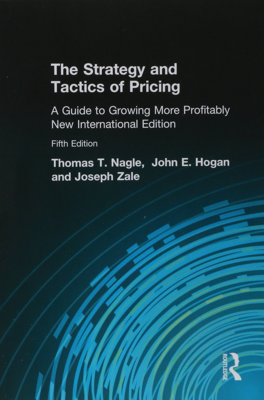Competition
Managing Conflict Thoughtfully
The chapter starts by explaining the complex dynamics of competing on price when faced with competitive markets, emphasizing the importance of strategic decision-making beyond just immediate sales boosts. For instance, the tale of Alamo's strategic pricing misstep shows how a poor understanding of competitive reactions and market dynamics can lead to business failure. Instead of just diving into price wars, companies need to consider leveraging competitive advantages and minimizing vulnerabilities.
Understanding the Pricing Game
Pricing strategy is likened to a chess game that requires foresight and an understanding of the entirety of the market, not just isolated decisions. The chapter demarcates the difference between "positive-sum" games, like sports or academics, where competitive intensity can yield direct benefits, and "negative-sum" games, such as price competition, where aggressive tactics often erode market value.
Competitive Advantage: The Only Sustainable Source of Profitability
Building a sustainable strategy does not imply aggressively chasing market share through pricing but rather focusing on creating value or enhancing operational efficiency. Competitive advantages can stem from being cost-effective or meeting customer needs uniquely. The text debunks the myth that market share is intrinsically linked to profitability, instead presenting it as a possible outcome of a well-executed competitive strategy.
Reacting to Competition: Think Before You Act
Responding to competitive threats with price cuts is risky and can lead to losses if not handled thoughtfully. The chapter advises a detailed analysis, including potential competitive threats and the financial implications of a price war. Different principles are suggested to minimize the cost and maximize the effectiveness of a competitive pricing response. These include focusing price cuts on the most threatened segments, flanking offers, and exploiting geographic or product-specific advantages.
Managing Competitive Information
Diplomacy is touted as a critical skill in pricing strategy, which involves managing both the collection and dissemination of competitive information. Sharing insights about market conditions or company capacities can prevent destructive competition and aid in maintaining stable market prices. Strategies like pre-announcing price increases or openly discussing capabilities can help manage competitor expectations and preempt opportunistic price cuts.
When Should You Compete on Price?
The chapter concludes by outlining circumstances under which competing on price may be beneficial. It can be justifiable when a company has a substantial cost advantage, targets a niche market, can subsidize losses through complementary products, or expands the overall market. However, these approaches require careful execution and an enduring competitive advantage, emphasizing that aggressive pricing should support, not substitute, a robust growth strategy.
Overall, the key takeaway is that while price can be a powerful tool to stimulate sales, it must be used judiciously with strategic foresight and a deep understanding of competitive dynamics to sustain long-term business profitability.
